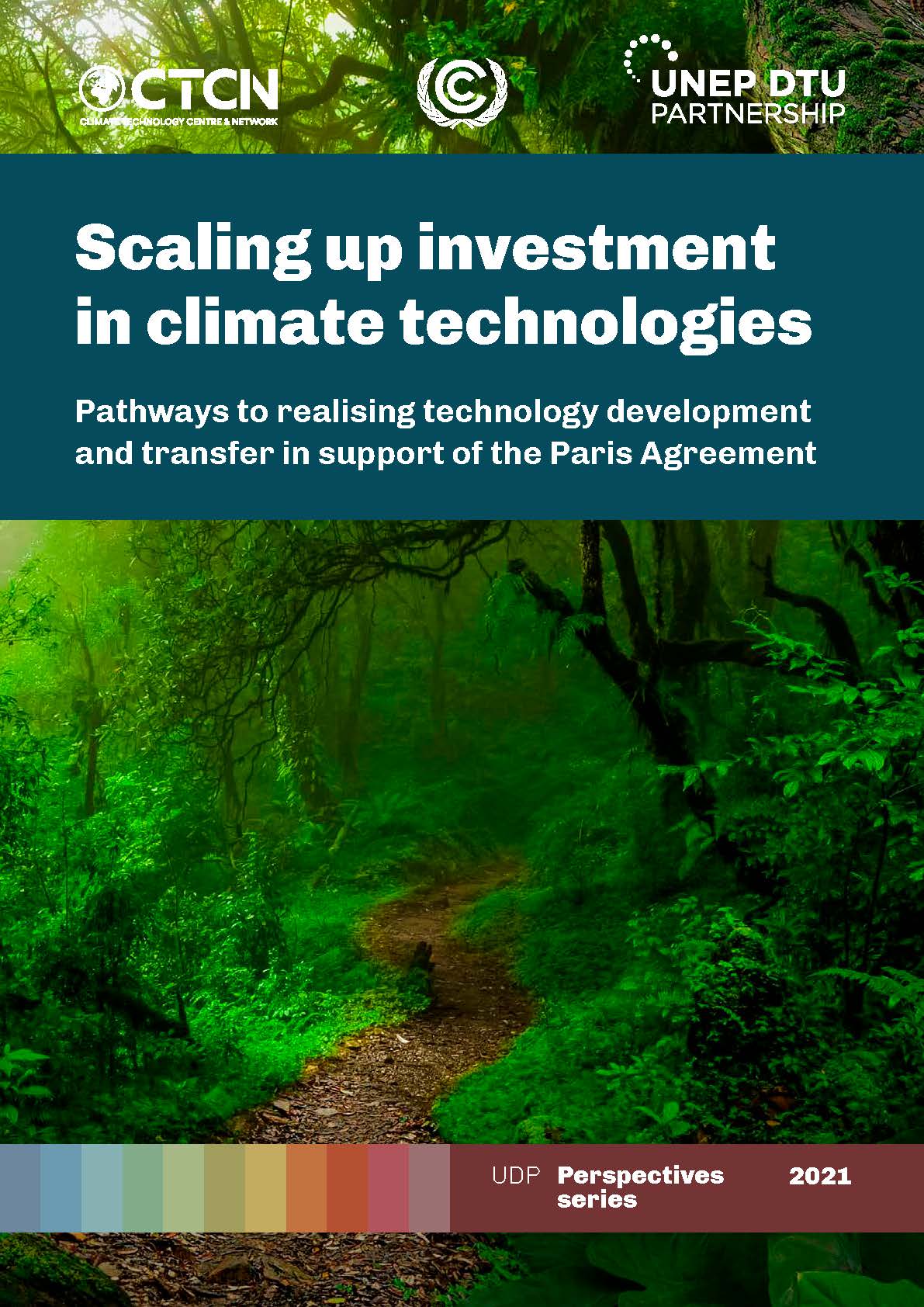A new ‘Perspectives’ publication focuses on how to close the gap between technology needs and implementation in support of Nationally Determined Contributions to the Paris Agreement. What are the pathways to realising technology development and transfer? And what are the main opportunities for, and constraints to, progress?
These questions are addressed by a diversity of authors, who offer their evidence-based views and opinions. In doing so, the collection aims to stimulate, or contribute to, relevant debates in the area of climate technology development and transfer in the Global South.
Click to download the publication: scaling up investment in climate technologies: Pathways to realising technology development and transfer in support of the Paris Agreement
The UNEP DTU Partnership ‘Perspectives’ Series share expert and practitioners’ opinions and experiences on emerging topics related to climate change. This new volume has been published in collaboration with the UN Climate Technology Centre and Network (CTCN) and UNFCCC Secretariat.
In the publication, ‘implementation’ is defined as something broader than investment in low-carbon and climate resilient development, though investment is ultimately what is needed, at scale, if countries are to meet their NDC targets.
Much of the analysis in the articles seeks to understand the relative influence of top-down government-driven policy and planning as well as a diverse set of bottom-up push and pull factors that influence technology agendas, supply and demand.
Understanding the driving forces behind technology transfer and implementation in developing countries
How can we close the gap between national, regional and global climate technology needs and actual implementation? Who are the responsible parties from the global to local levels? And how are local needs taken into account, including the interests and preferences of technology end-users?
By asking these broad questions to our contributing authors the new Perspectives volume seeks insights into the practical value of government-led processes, and how they influence or link to public and private investment decision making at the project level.
Several articles in the publication focus on cleaner energy technologies, central to global climate change mitigation efforts, where a fast pace of socio-technical and economic change that has occurred.
Offering a nuanced understanding
However, there are inherent limitations to the role of market forces in kick-starting technological transitions and it is widely recognised that the State has a central role to play in creating new markets and pushing socially and environmentally beneficial technologies along the innovation-cost curve.
The articles in this publication offer a deeper and more nuanced understandings of how technology transitions can occur and how best to navigate these in the Global South. This includes the significance of unintended or indirect benefits from technological innovation and growth in unrelated markets.
For example, in an article that focuses on solving the clean cooking conundrum in Africa the authors discuss emergence of highly efficient Electric Pressure Cookers (EPCs) and the cost reductions in batteries driven by growth in global electric vehicle markets, both of which have stimulated the uptake of electric cooking in Africa.
Indeed, EPC technology appears to be doing for cooking what the LED light bulb did for lighting, e.g. offering a high quality of service provision at a fraction of the power demand of incumbent technologies, thus lending itself to off-grid and renewable sources of power.
Creating the conditions for large-scale investment, to enable and incentivise large-scale flows of public and private capital
Two of the articles in this collection focus on the role of financing, explicitly. One, authored by staff of the Private Financing Advisory Network (PFAN), offers various recommendations, including the need to expand the provision of blended finance, combining varying levels of risk-return investors with grant funding and technical assistance for SME project developers.
The PFAN authors also highlight the importance of data generation, collection and interpretation as a means to create new investment opportunities, especially where the bundling of assets and lower financial scale thresholds are needed to invest in bottom-of-the-pyramid energy access technologies.
A related article by the African Development Bank focuses mostly on the role of patient and concessional funding from government or multilateral sources, key to de-risking projects and, subsequently, crowding in private capital.
This is of fundamental importance, given all the uncertainties, costs and often long pathways to realising technology development and transfer in support of the Paris Agreement.



